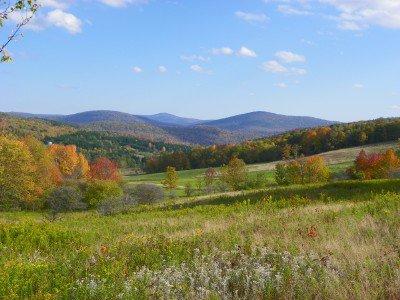Peter Mauer had no idea of the tie that would bind him to guinea hens when he caught one at the age of 8.
A farmer told him that if was able to catch one, he could keep it. “I don’t think he ever anticipated me catching one,” he said. “It tried to fly up and over a three-story dairy barn, and it almost made it—but it didn’t quite make it—and I caught it on the way down.”
Almost 40 years later, guinea hens saved his family farm—with the help of some humans along the way.
Mauer’s Mountain Farms is perched on top of a mountain in the western Catskills. About 40 cows would pasture at the very top, a medley group of Holsteins, Jerseys, Guernseys, and Ayrshires. His chore growing up was to bring them back down to the barn. “There were five or six that would not come on their own. You had to go find them. It didn’t matter if the sun was shining or it was pouring rain,” he said.






